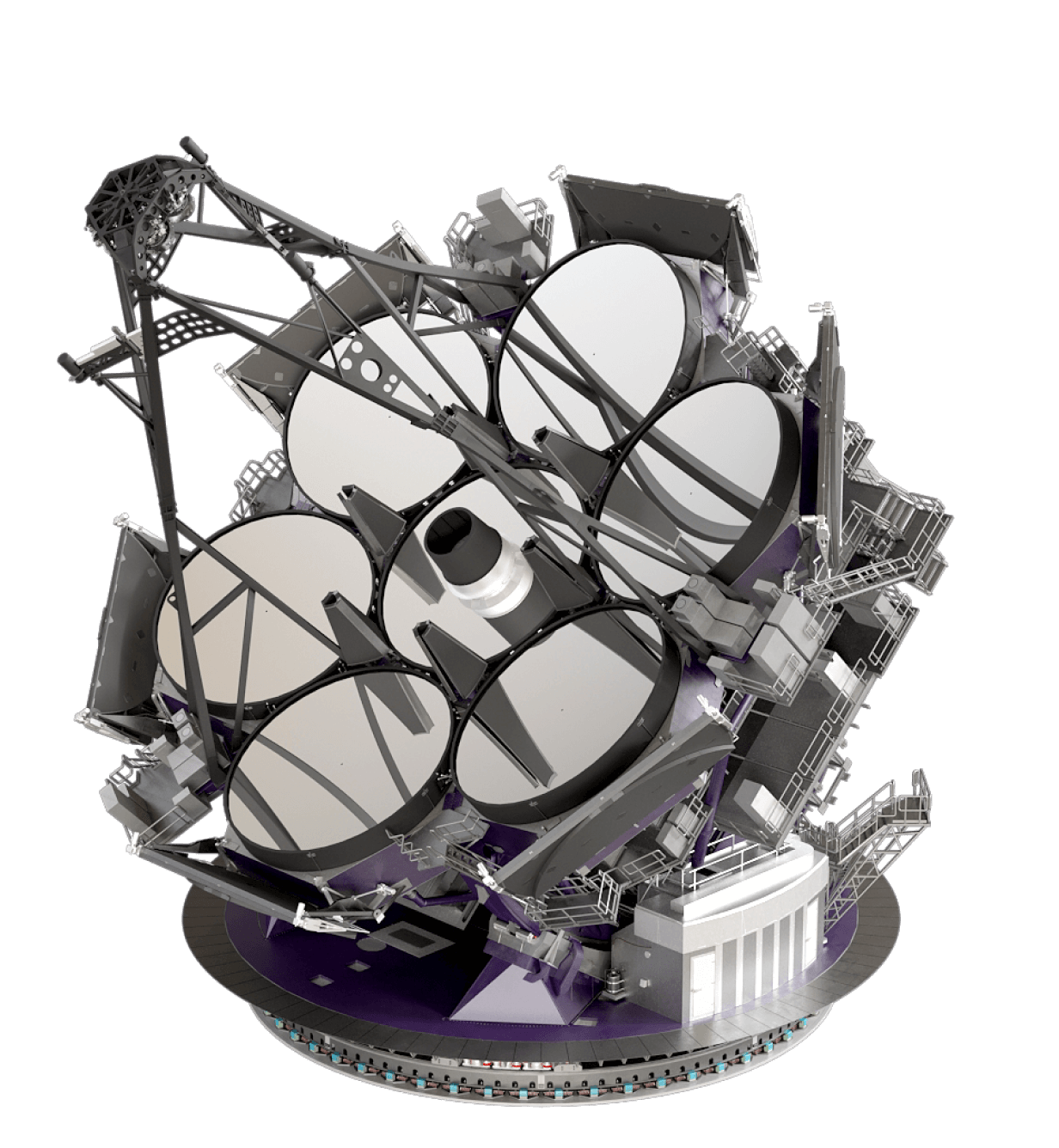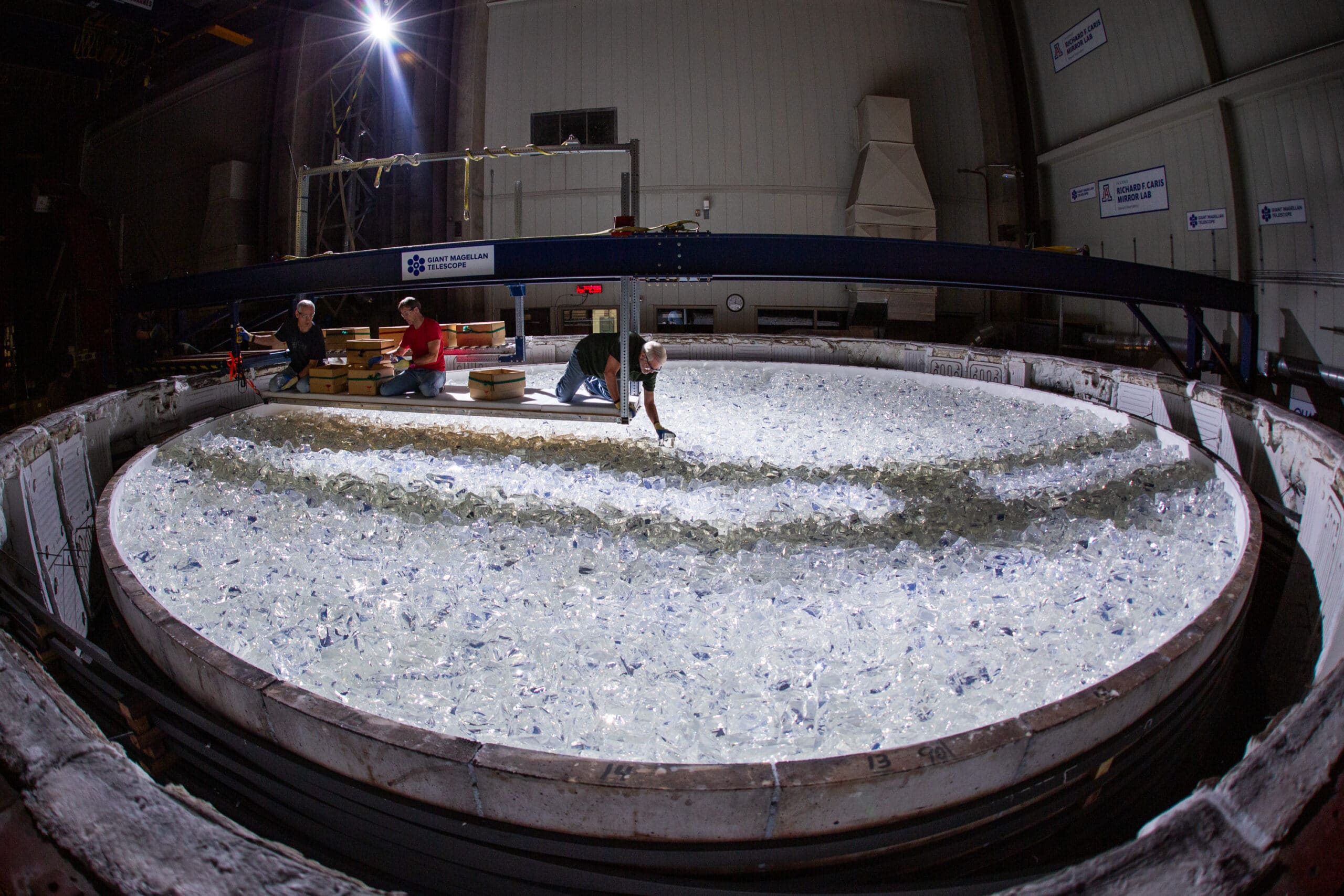
Primary Mirrors:
World’s Largest Optics
The Giant Magellan Telescope’s seven primary mirrors are the world’s largest and most challenging optics ever produced. The primary mirrors are the telescope’s first contact surface that collects incoming light from the night sky. Each 8.4-meter diameter mirror has an astonishingly smooth surface, takes four years to complete, and utilizes 17 metric tons of Ohara E6 low expansion glass. The segmented mirrors have a parabolic shape and are arranged in a unique flower pattern to form a 25.4 meters wide light-collecting surface, the largest of any built telescope to date. The efficient optical design is a world first and promises to see farther into the universe with more detail than any other telescope before.
World’s Largest Mirrors
The Giant Magellan Telescope uses seven of the world’s largest optics for its primary mirrors, each 8.4 meters in diameter to form a 25.4 meter mirror surface.
Image Resolving Power
The primary mirrors give the Giant Magellan Telescope 4–10 times the image resolution of the most advanced telescopes that exist today.
Light Collecting Power
The Giant Magellan Telescope’s array of seven mirrors work together as a single mirror with a total light collecting area of 368 square meters.
Extreme Surface Smoothness
Each primary mirror on the Giant Magellan Telescope is polished for approximately two years to obtain a final optical surface precision of more than 25 nanometers. They are so smooth that the highest peaks and valleys are smaller than one thousandth of the width of a human hair.



